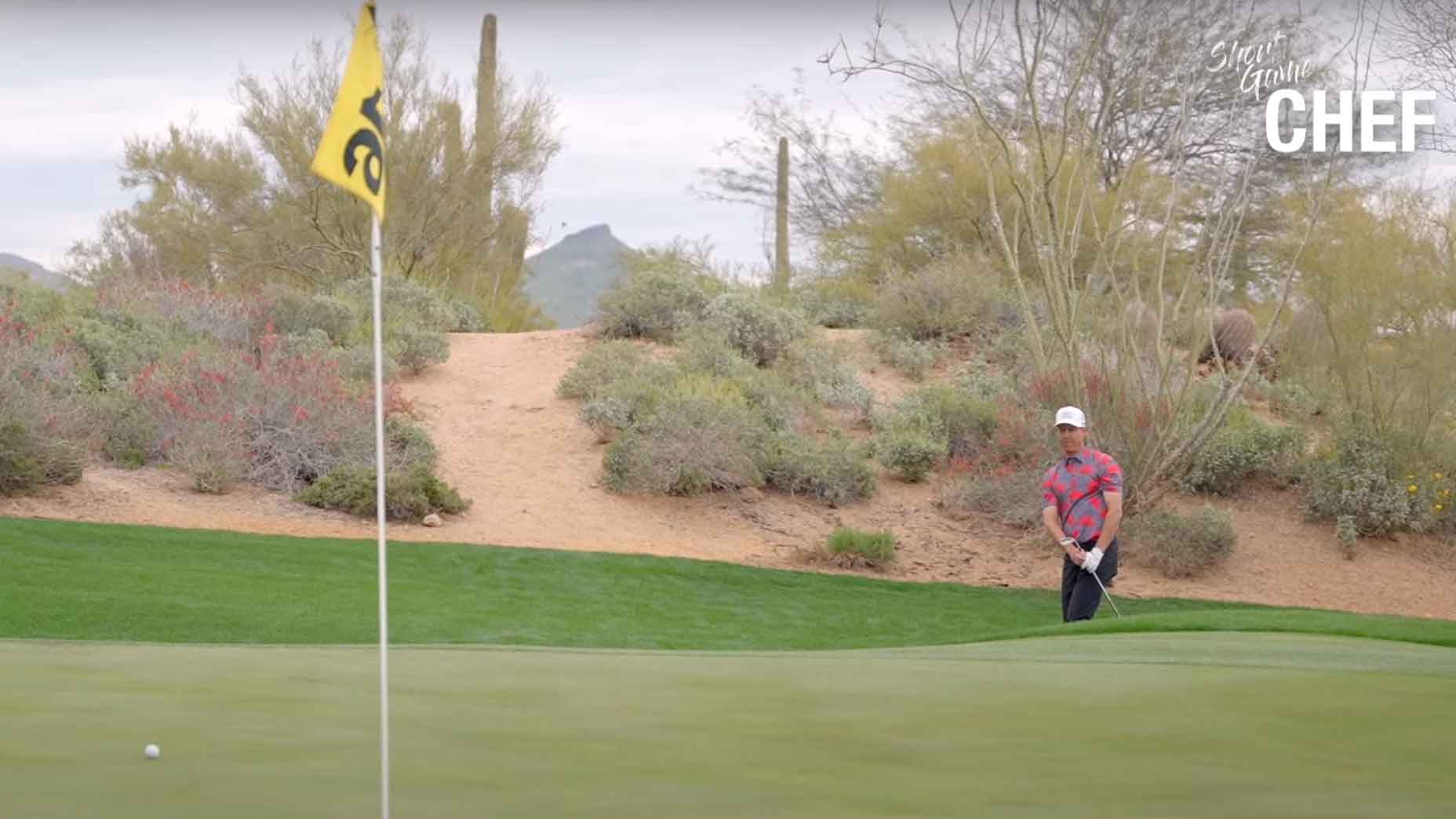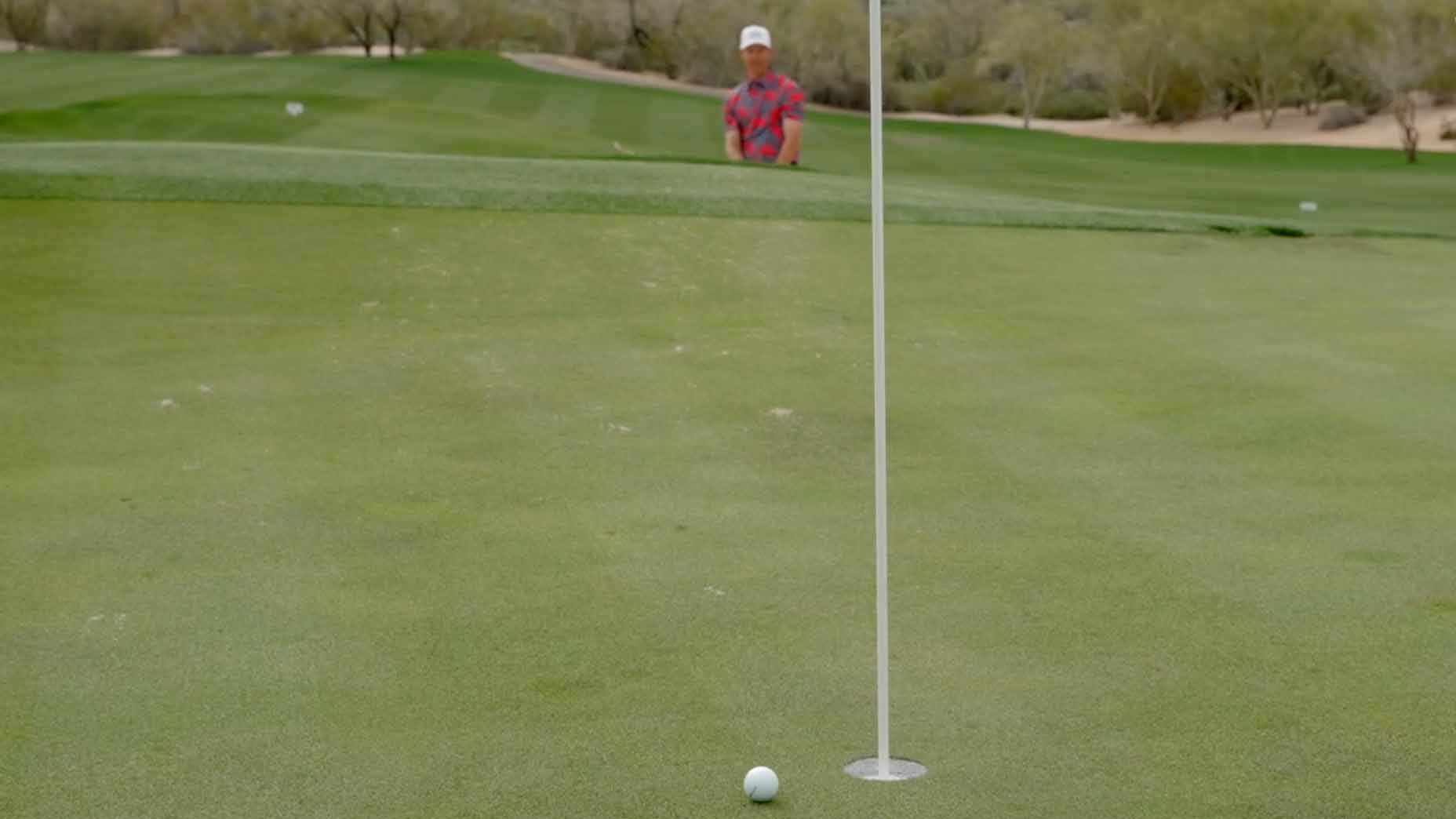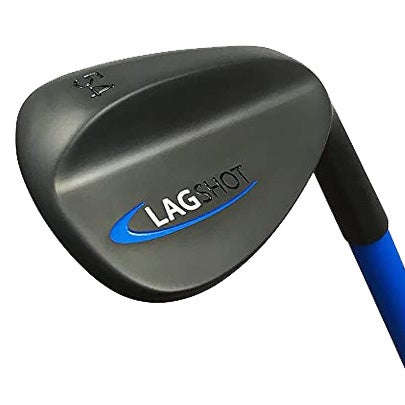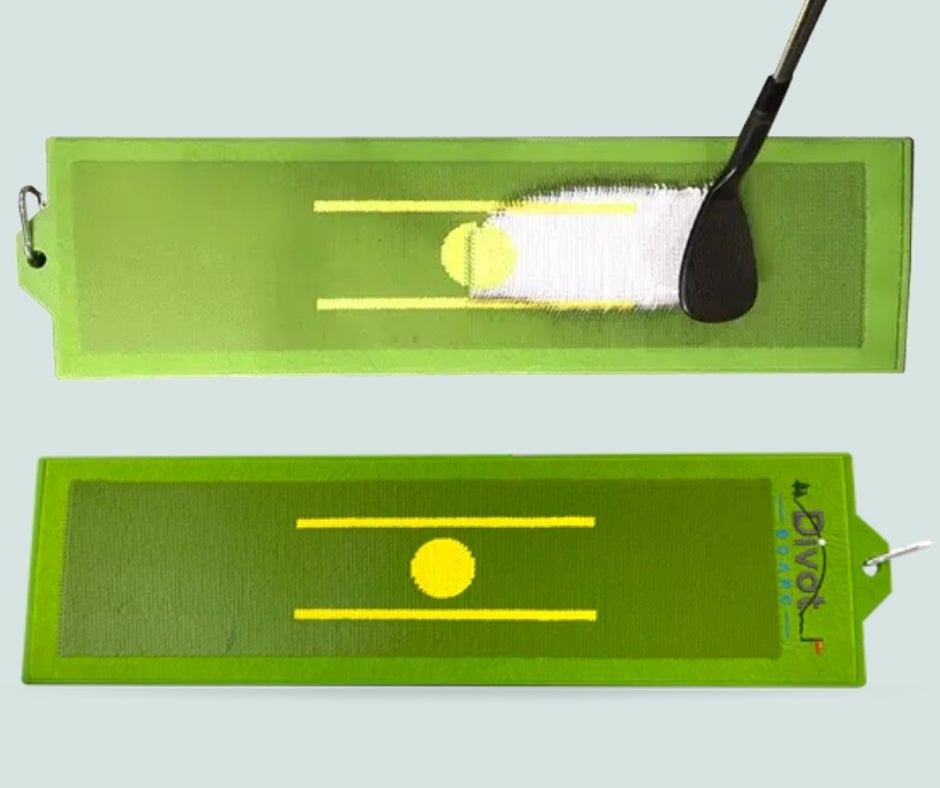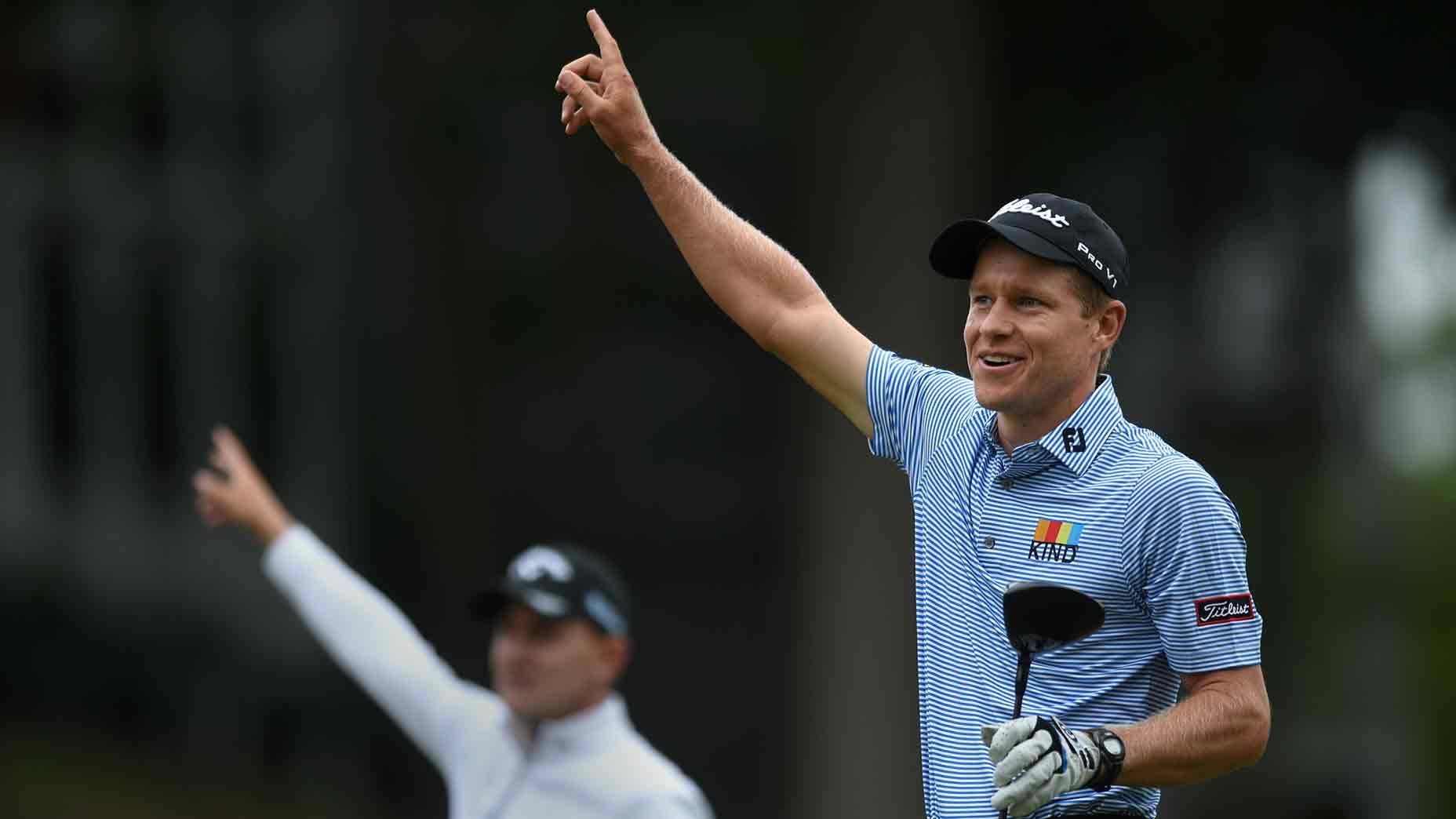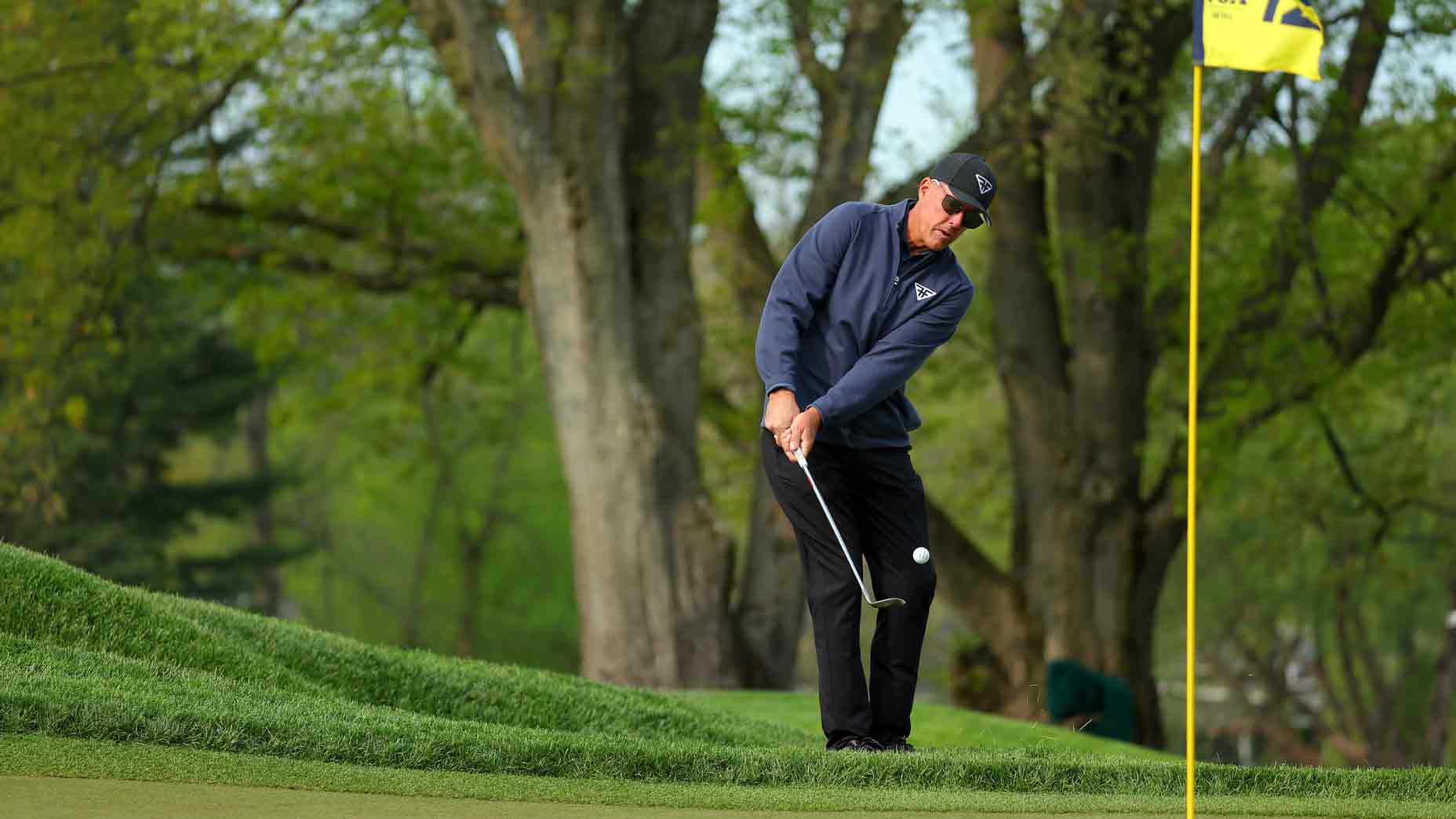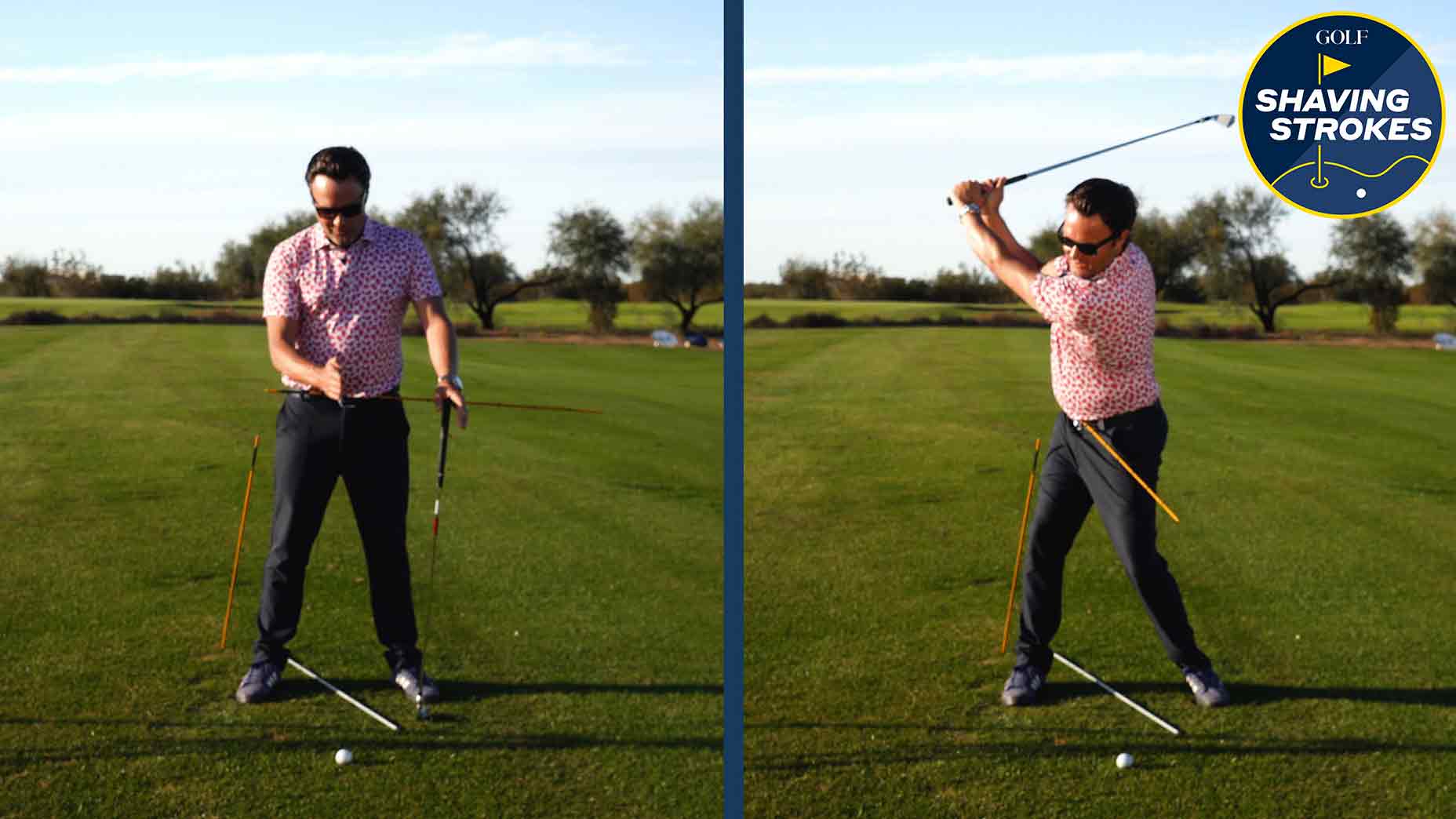Soon after I started playing golf I defaulted to using a pitching wedge anytime I got around the green. It seemed comfortable, and, rather than risk mishitting a lob wedge, I figured it was my best opportunity to land on the green — even if it did often result in a ball that rolled eight, 10 or 15 feet past the hole.
But after a quick lesson with Parker McLachlin, aka Short Game Chef, my mindset completely changed.
In today’s Pros Teaching Joes, McLachlin not only shows me the proper setup and swing to use a lob wedge, but, by doing so, gives me the confidence to make it my go-to club around the putting surface.
So if you’re someone who just always grabs pitching wedge, 8-iron or something else near the green, take a look at the video above to see why you could be costing yourself shots — and why the lob wedge can help you hit crispier chips with pro-style backspin.
McLachlin’s tips for using a lob wedge
As McLachlin mentions in the video, my short game has always been “a little bit one dimensional.” That’s because I wasn’t expanding my horizons and just figured that pitching wedge was the safer club to hit.
He adds, “I don’t think you’re alone in that. I think there’s a lot of amateurs that do that.”
So how can you gain trust in the lob wedge? The first thing McLachlin does is explain the benefits of the higher-lofted wedge — especially for a shot that I was about to take, which had a steep hill that I needed to clear to reach (and stay) on the green.
“The other disadvantage to using this pitching wedge is that we are going up the hill,” he tells me. “So if you don’t get it up this hill, and you don’t carry it over the hill, there’s a good chance this is rolling back to your feet. This could add 1-2 more strokes to your game.”
After reassuring me that hitting a pitching wedge is actually riskier than hitting a lob wedge, McLachlin has me hit a few chips to analyze where I can improve.
“Here, try the 60-degree [lob wedge]. I think there’s a lot of good things in your motion,” McLachlin says. “You don’t have to put the ball position so far forward. With that pitching wedge, you had to put that ball forward to add loft to it.
“Let’s use the 60-degree, and put the ball position a little more middle; closer to your sternum. You don’t have to open the face as much, feet are closer together, and the ball position can go a little bit more to the middle. Weight position is pretty neutral. Now make your normal swing from there.”
After I hit my first shot with the lob wedge, the ball sails on me a little bit — with McLachlin saying I just hit the ball first a little too much. This is where he wants me to focus on turf interaction on my next attempt.
“Overall, that actually wasn’t that bad,” he says. “You should feel like you’re just brushing this grass here on the way through.”
Taking his advice, I hit my next shot just like the pros do — and put some killer backspin on it to sit perfectly on the green.
“Beautiful! Oh my god, look at that thing stop on a dime!”
After hitting a shot that felt more natural, I voice a little concern over getting accustomed to my swing power with a 60-degree lob wedge. McLachlin shuts down those concerns and says the hardest part will be trusting my club choice by incorporating more turf interaction.
“The power part is going to be easy, right? I want to make sure that your turf interaction is good. Because you have a higher-lofted club, the leading edge can sort of pay you a visit more than you want it to,” he says.
“I felt like, with the pitching wedge, you had the ball so far back in your stance that you’re trying to lean back to try and get some loft on it.”
This is where it comes down to trust and confidence, relying on the lob wedge’s loft to hit the shot I want.
“Use the loft from the 60-degree [lob wedge], make your normal type of swing, and you saw the thing come out high, land soft, and it actually spun for you. So that adds another dimension to your short game, which is exciting.”
Remember, seeing a successful shot with a lob wedge boils down to setup and club positioning. And, in many cases, less is more — so McLachlin reminds me that I don’t need to do anything extreme.
“Just because you have a 60-degree [lob wedge] doesn’t mean you need to set up really wide and open the face. With a 60-degree, you can still have feet close together, and you can have the face fairly square. You don’t have to feel like you need to go to the extreme just because you grabbed your 60-degree.”
If you’re interUse GOLF15 for 15% off a Short Game Chef membership! Click here to join.

